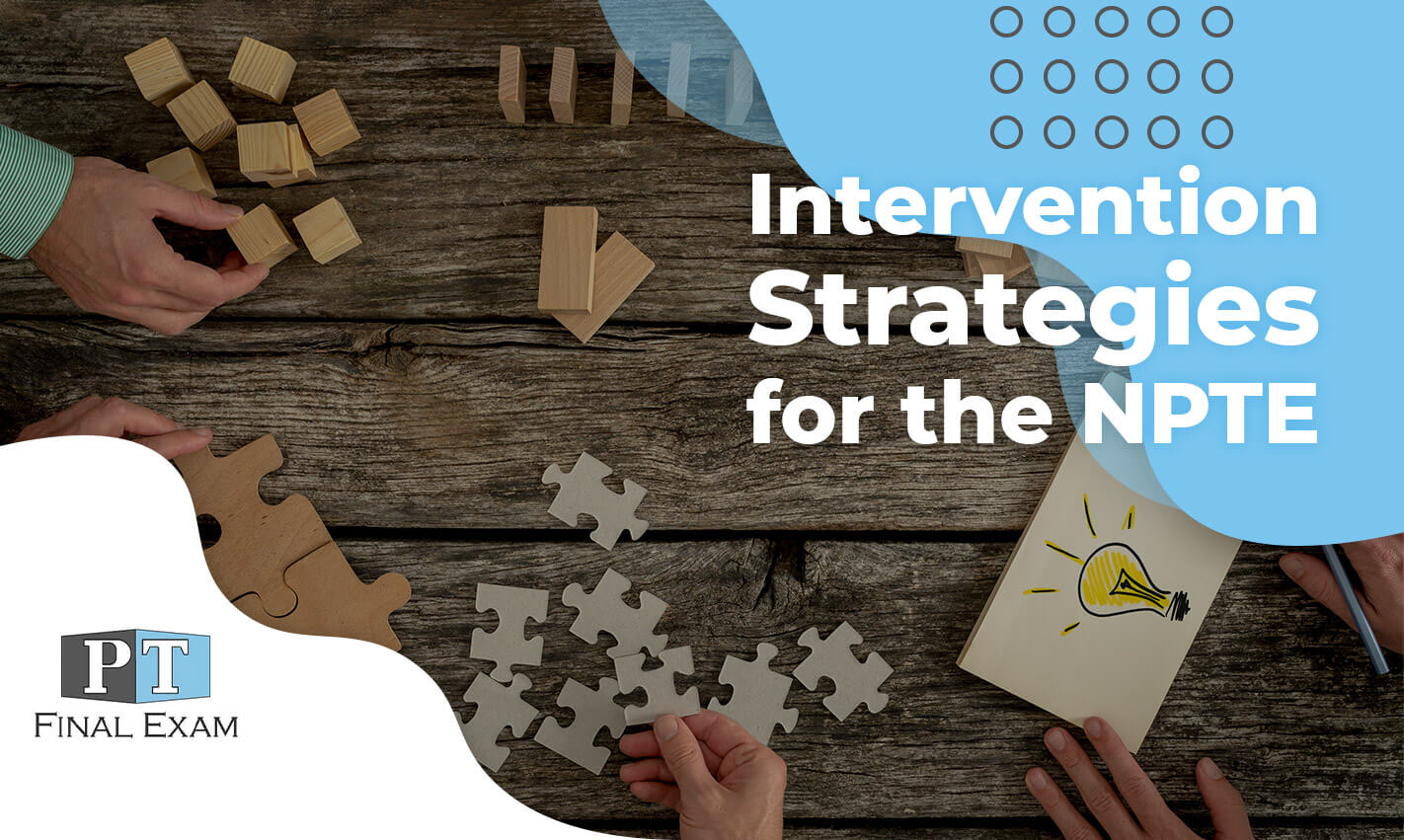
I’ve been getting a lot of questions lately about the musculoskeletal intervention section of the NPTE. In my last posts, I described the rationale behind the rehab protocols for tendon and ligament healing. These articles describe well the tissue healing times and the anatomy behind the protocols. I have always felt that this is very important when creating a rehabilitation program–if you understand deeply the mechanism and the “why” behind a treatment, you will be able to extrapolate that information much better into other similar treatments.
That being said, there are numerous research articles about intervention strategies following a surgical repair that list what types of exercise the researchers did, but do not mention the exact load and dosage of the exercise. I want to list a few of the important guiding principles behind intervention strategies.
- Check out the ACSM Position Paper on exercise in healthy adults. Most of our patients are not classified as healthy adults, but some of the same principles apply. Almost generally, we know what types of exercise to do, but the dosage can be a bit nebulous. Here are some key points from that Position Paper.
- In injured patients, we almost never test the 1 Repetition Maximum. Can you imagine doing that with a rotator cuff repair? Disaster.
- In place of the 1 Repetition Maximum (1 RM), we can use % of Max HR, Heart Rate Reserve, Metabolic Equivalents, or % VO2max
- Some pieces of exercise equipment monitor heart rate and give a MET estimate
- For robust gains in muscle strength, use weight 60-80% of the 1 RM for 3 sets of 8-12 repetitions (2-3 minute rest break between sets) 3-5 times per week.
- For increased endurance in muscles, use <50% of the 1 RM for 2 sets of 15-25.
- Keep in mind that this is only referring to muscle training, not tendon or ligament issues.
- As a general rule, most tendinous and ligamentous injuries are treated at “submuscular” loads, meaning that pain will limit the loads the tissue will tolerate
- For all strength training, care must be taken to avoid creating an overuse injury. ACSM recommends a rest day between high intensity loads. This favors a 3-5x/week training regimen.
- When training injured individuals, try to target the tissue at fault.
- For cartilage, maintain a low load (30% of body weight or 1 RM) and perform 1000’s of repetitions through several sets (example: 15 minutes of Total Gym mini-squats)
- For tendons/ligaments, maintain a moderate load of <50% 1 RM and perform 100’s of repetitions through several sets (example: 3 sets of 30 reps with light tubing)
- For muscular deficits, maintain a higher load of 60-80% 1 RM and perform 3 sets of 8-12.
- Function will be key, especially when providing exercises to a convalescing patient. Choose activities that mimic real-life situations and provide varied practice to simulate that environment
- A great resource for types of exercise and evidence-based protocols is the Handbook of Orthopaedic Rehabilitation. I use this book on a daily basis for a general guide to rehab following selected surgeries.
These points provide a general framework for treating some of the most common musculoskeletal and neuromuscular injuries/conditions.


1 thought on “Intervention Strategies for the NPTE”
thanks for the info!
Comments are closed.